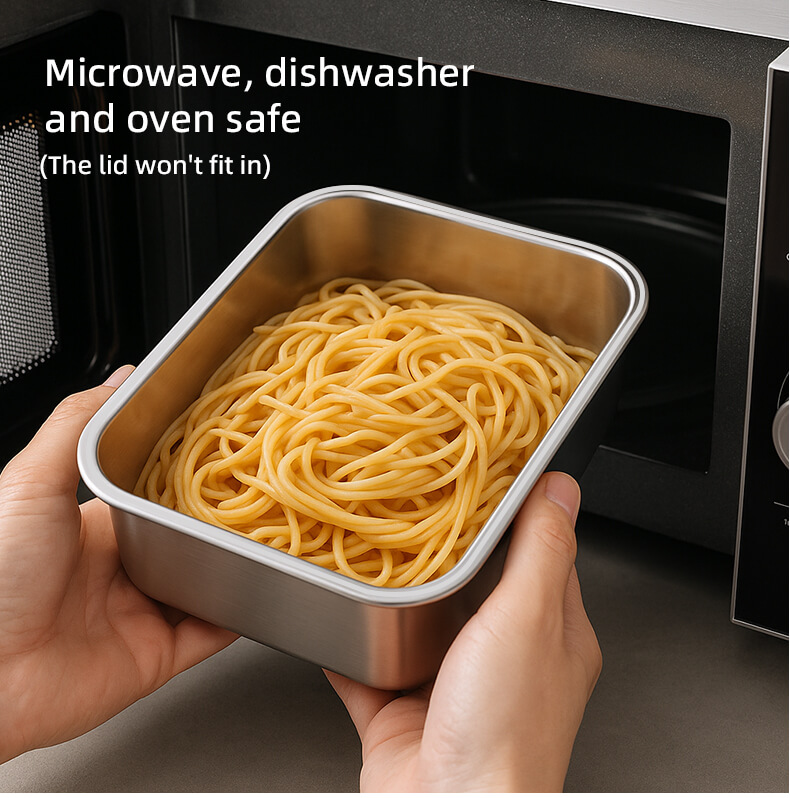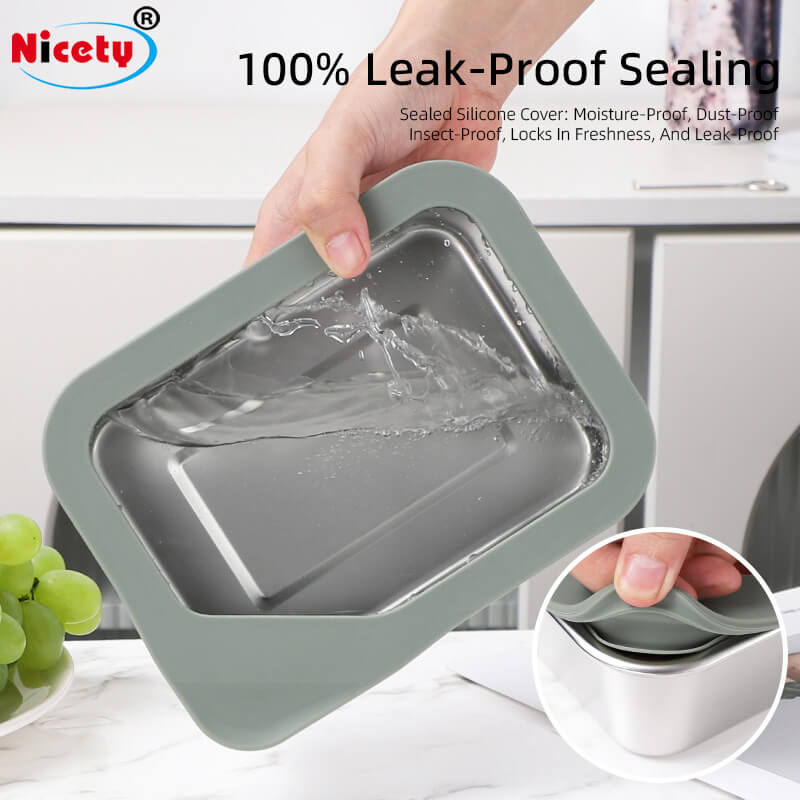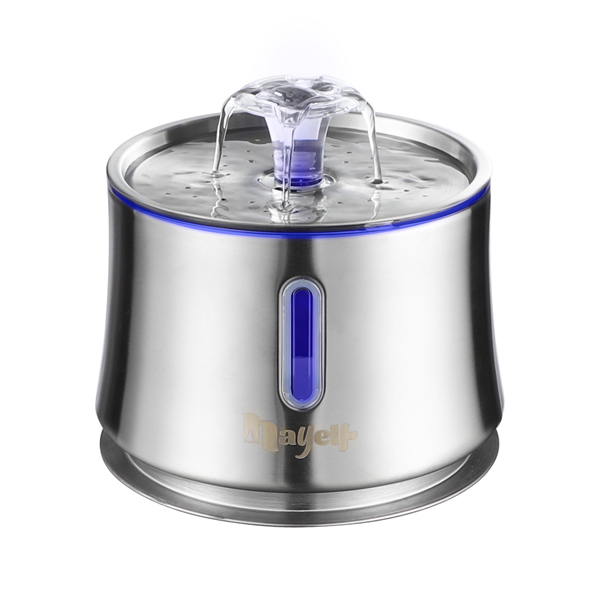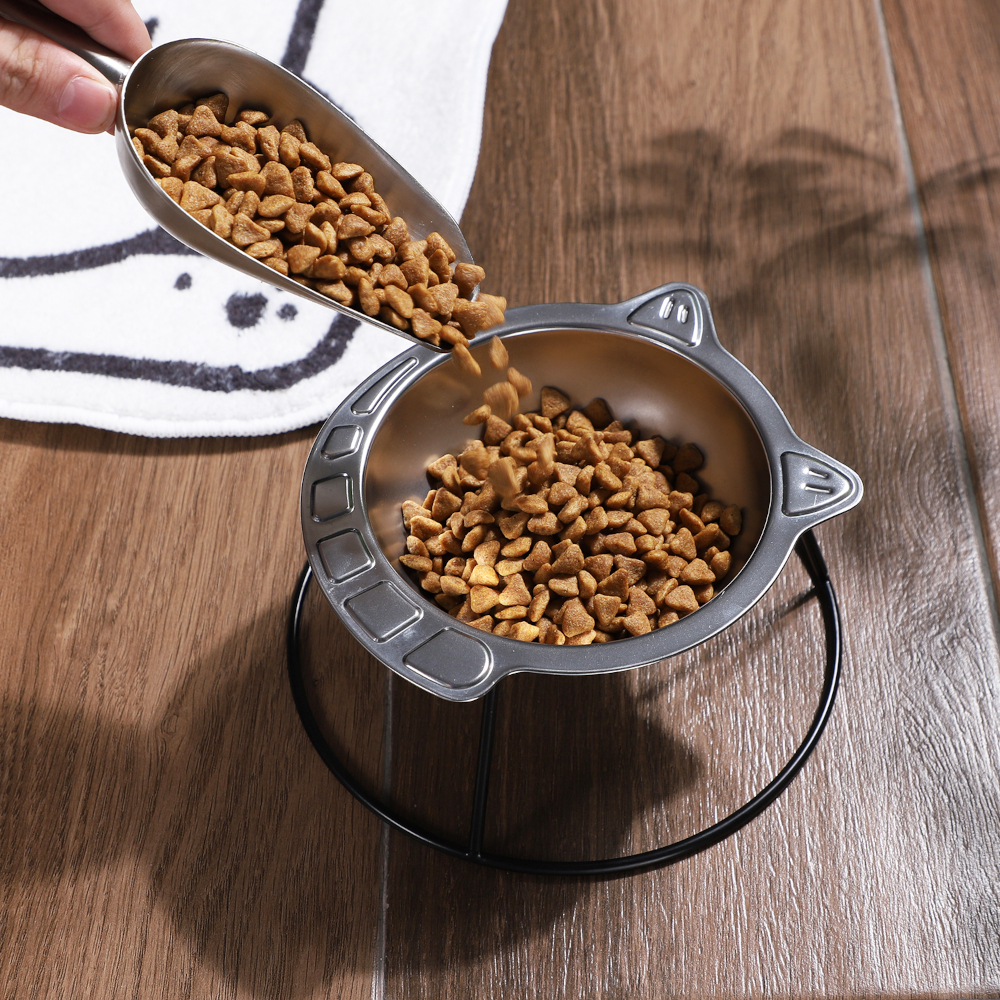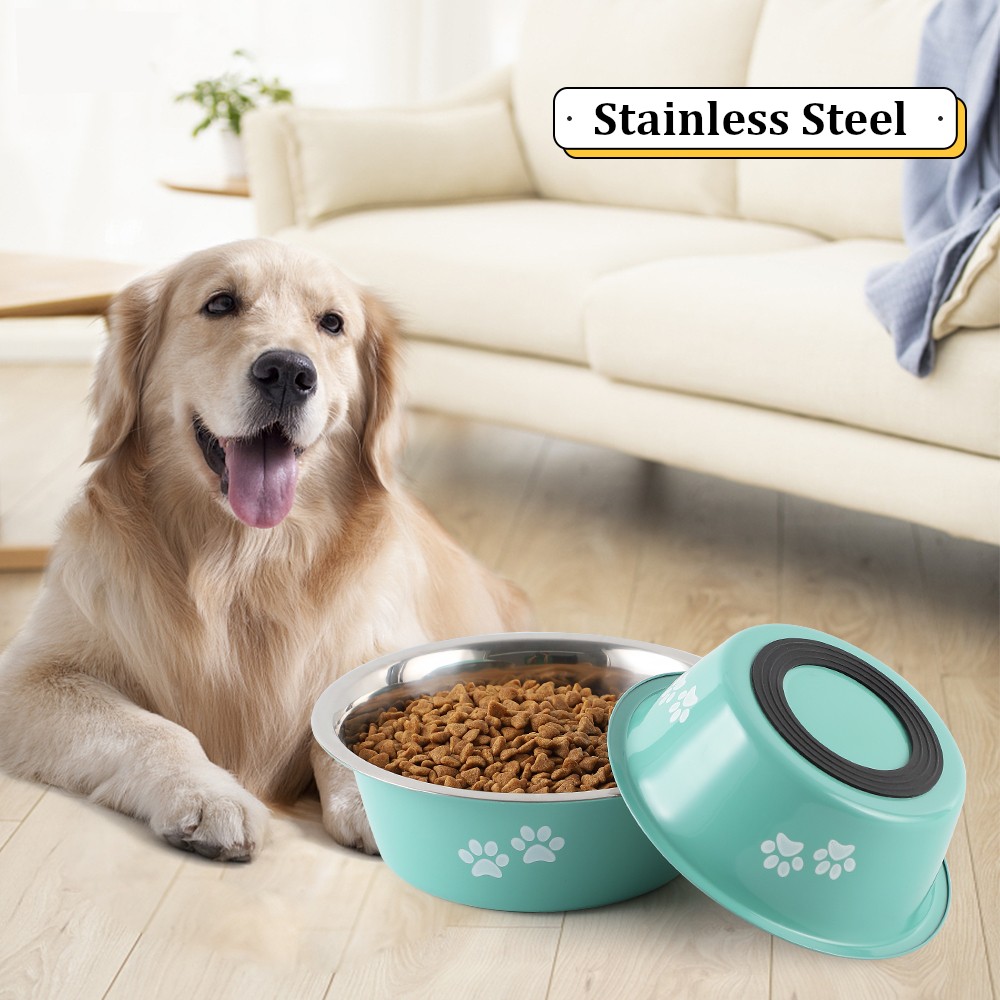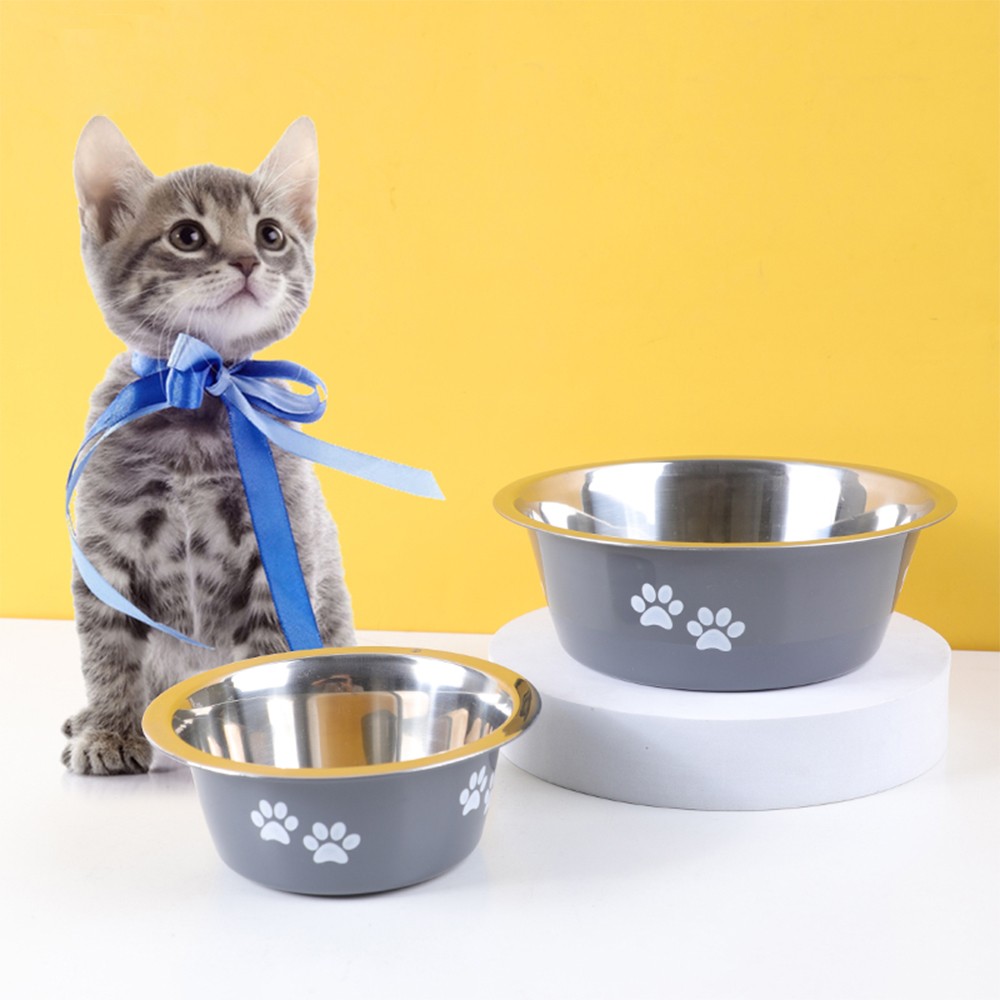
Introduction: Why the Material of Your Cat’s Bowl Matters
Ever get lost in thought about the gourmet meals or the ritzy bites you’re offering your cat? But have you ever reflected on the receptacle you’re loading that swanky sustenance into? It might seem inconsequential, but the substance that bowl is made from? Major player. It can have a say in how fit and jolly our little whisker-wearers are. Whether you’re a stainless steel devotee or a ceramic fan, each has its own ups and downs. So, let’s take a jaunt through the realm of cat bowls and nail down the best spot for your kitty’s grub.
The Importance of Material Choice for Your Cat’s Health
The different materials of your cat’s bowl aren’t just about aesthetics. It plays a pivotal role in ensuring your cat remains healthy. Some materials are more prone to bacterial buildup, posing health risks. Take plastic bowls; they can be a breeding ground for bacteria, leading to issues like feline acne. On the flip side, materials like stainless steel are less welcoming to bacteria. Additionally, some materials can chemically react with your cat’s meal, adding toxins or messing with the flavor. Therefore, knowing the ideal material for a cat bowl is essential for every cat guardian.
Overview of Common Materials
When you walk down the pet aisle, you’re bombarded with a plethora of choices for cat bowls. Let’s break down the most common materials:
- Stainless Steel: Known for its durability and rust-resistant properties, stainless-steel bowls are a popular choice among cat owners. They’re easy to clean, don’t hold onto odors, and are generally considered the best material for cat water bowls and food dishes.
- Ceramic: Typically adorned with exquisite designs, these ceramic dishes can beautify your home. Yet, they risk cracking or chipping, and without adequate glazing, can attract germs.
- Plastic: Usually the most cost-effective, these dishes might not be the first choice for feline feasting. They can accrue scratches, which can house bacteria. Additionally, some felines might have sensitivities to particular plastics.
- Glass and Stoneware: Becoming popular as stylish selections, these materials are known for their robustness and can add a touch of elegance. Yet, similar to ceramics, they can fracture if not handled with care.

Stainless Steel Cat Bowls: The Gold Standard
When determining the gold standard for cat bowl materials, stainless steel often gets the nod. The lowdown? It’s rock-solid in terms of durability. No nail-biting over potential mishaps, and it’s prepped for daily servings. And, it’s dishwasher-amiable, so sprucing it up is no biggie.
Pros of Stainless Steel Bowls
- Durability: These bowls are in it for the long haul. No need for frequent replacements.
- Easy to Clean: Pop it in the dishwasher, and voilà!
- Bacteria-Resistant: With no tiny crevices for germs to lurk in, it’s a safer bet for your feline.
Cons of Stainless Steel Bowls
- Cost: They can be a bit pricier upfront, but you save in the long run.
- Aesthetics: While functional, they might not win any beauty contests.
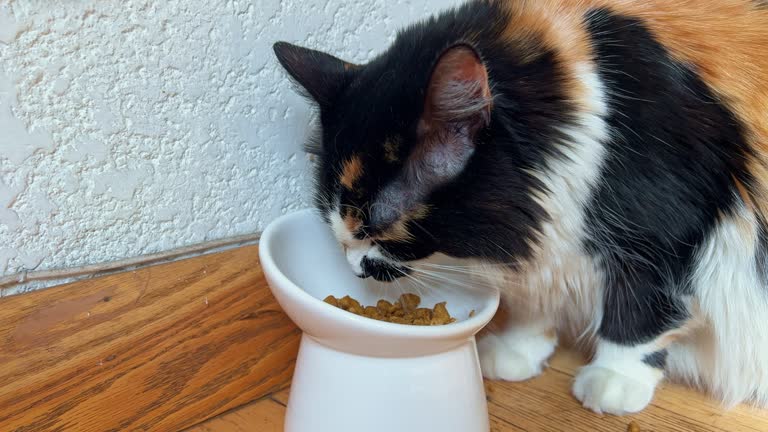
Ceramic Cat Bowls: A Stylish but Risky Option?
Ceramic bowls are the glam queens of the cat dish world. They boast a variety of artistic designs and color palettes, making them a hit for those who want their pet’s bowls to blend with their interior design. But are they the best bet for cat food bowls?
Pros of Ceramic Bowls
- Design: You can find a ceramic bowl to match almost any home aesthetic.
- Weight: They’re generally heavier, so less likely to tip over.
Cons of Ceramic Bowls
- Fragility: Drop one, and it’s game over.
- Porous: If the glaze wears off, it can become a breeding ground for bacteria, not the best choice for your cat’s health.
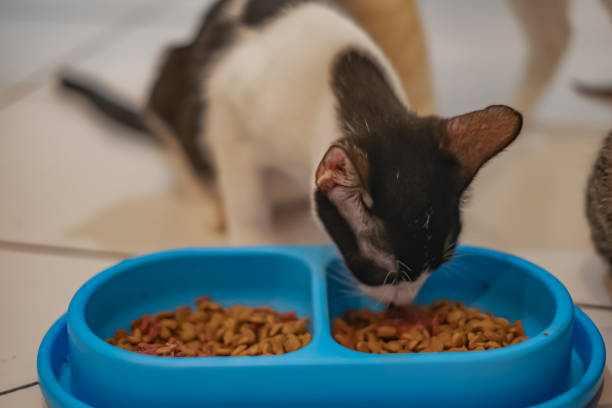
Plastic Cat Bowls: Why They Didn’t Make the Cut
Plastic bowls might seem like a good option due to their affordability and lightweight nature. However, when it comes to the best material for cat food bowls, they might not be the top choice.
Pros of Plastic Bowls
- Affordability: They’re often the cheapest option available.
- Variety: Available in a multitude of colors and designs.
Cons of Plastic Bowls
- Durability: They can scratch easily, leading to crevices where bacteria can thrive.
- Health Concerns: Some plastics can leach chemicals, especially if exposed to sunlight or heat. Plus, there’s the risk of feline acne.
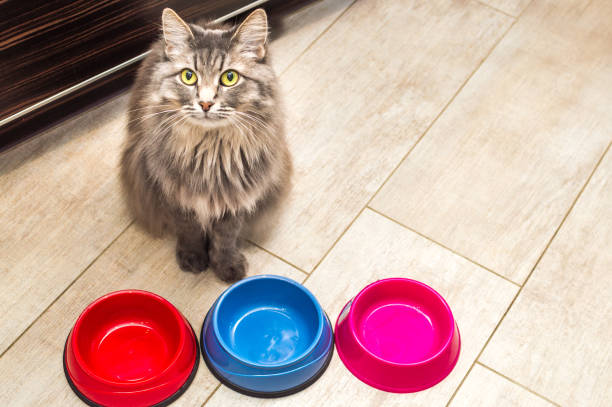
Emerging Options: Glass and Stoneware Cat Bowls
As cat owners look for alternatives to the traditional bowl materials, glass and stoneware are making their mark. But are they the best cat bowl material?
Pros of Glass and Stoneware Bowls
- Non-porous: They don’t harbor bacteria as easily as some other materials.
- Stylish: Like ceramic, they can be quite aesthetically pleasing.
Cons of Glass and Stoneware Bowls
- Breakability: They can shatter if dropped.
- Weight: While this can be a pro, it can also be a con if you need to move the bowls frequently.
Factors to Consider: Size, Depth, and Design
Size
- Pet’s Size: The size of your pet plays a crucial role in determining the right bowl size. A larger cat or dog will require a bigger bowl to ensure they get the right amount of pet food.
- Portion Control: If you’re monitoring your pet’s food intake, a smaller bowl might help in serving controlled portions. This can be especially useful for pets on a diet.
- Space: Consider where you’ll be placing the bowl. If you have limited space, you might need a smaller or more compact bowl.
Depth
- Snout Length: The length and shape of your pet’s snout can determine the depth of the bowl you should choose. Flat-faced breeds might prefer shallower bowls, while long-snouted breeds might find deeper bowls more comfortable.
- Whisker Fatigue: Cats, in particular, can experience discomfort when their whiskers touch the sides of a bowl. A shallower bowl can help prevent this.
- Food Type: Wet food might be better served in a shallower dish, while dry food might sit well in a slightly deeper bowl.
Design
- Material: The bowl’s material can influence its durability, weight, and ease of cleaning. Stainless steel, ceramic, and plastic each have their pros and cons.
- Aesthetics: If you want your pet’s bowl to match your home decor, consider the design, color, and style of the bowl.
- Functionality: Some bowls come with added features like non-slip bases, tilted designs for easier eating, or even raised platforms for better digestion. Consider any specific needs your pet might have.

How to Check the Quality of Stainless Steel Bowls
- Material Grade
Look for bowls labeled as 18/8 or 18/10, which indicates the chromium and nickel content. These grades are generally considered high-quality and more rust-resistant.
- Weight and Thickness
A good-quality stainless steel bowl will have a certain heft to it. Thin bowls are more likely to dent or deform.
- Finish and Construction
Examine the bowl for any sharp edges, seams, or irregularities that could harm your pet or affect the bowl’s durability. A smooth, well-finished bowl is usually a sign of quality.
- Magnet Test
High-quality stainless steel is generally non-magnetic. While this isn’t a foolproof test, a magnet not sticking could be a positive indicator.
- Sound Test
Tap the bowl lightly. A high-quality stainless steel bowl will produce a clear, resonant sound, while a dull sound may indicate poor quality or a hollow construction.
- Corrosion Resistance
Check if the bowl is labeled as “corrosion-resistant” or “rust-proof.” While stainless steel is generally rust-resistant, higher-quality bowls will have better corrosion resistance.
- Ease of Cleaning
Look for bowls that are dishwasher-safe and easy to clean. Bowls with intricate designs may be harder to clean thoroughly, affecting hygiene.
- Brand Reputation
Sometimes, the manufacturer’s reputation can be a good indicator of quality. Look for brands known for producing high-quality pet products.
- Customer Reviews
Reading reviews from other pet owners who have used the bowl can provide insights into its quality and durability.
- Certifications
Check if the bowl has any certifications for safety or quality, such as being FDA-approved for food safety.
Cleaning and Maintenance: Tips for Each Material
| Material | Cleaning Tips | Maintenance Tips |
| Stainless Steel | – Use warm soapy water and a sponge to scrub the bowl.- Rinse thoroughly to remove all soap residues.- Dishwasher safe, but it’s best to wash in the top rack. | – Dry thoroughly after washing to prevent water spots. – Regularly check for any signs of wear or rust. |
| Ceramic | – Wash with warm soapy water and a sponge or brush. – Rinse well to remove all soap residues. – Most ceramic bowls are dishwasher safe, but check the manufacturer’s instructions. | – Regularly check for chips or cracks as they can harbor bacteria. – If the glaze is wearing off, it’s time to replace the bowl. |
| Plastic | – Wash with warm soapy water and a sponge or brush. – Rinse thoroughly to remove all soap residues. – Some plastic bowls are dishwasher safe, but check the manufacturer’s instructions. | – Regularly check for scratches or cracks as they can harbor bacteria. – Replace the bowl if it shows signs of wear or damage. |
| Glass/Stoneware | – Wash with warm soapy water and a sponge or brush. – Rinse well to remove all soap residues.- Most glass and stoneware bowls are dishwasher safe. | – Regularly check for chips or cracks. – Replace the bowl if it shows signs of wear or damage. |
Remember to clean your pet’s bowls daily to maintain hygiene and prevent bacterial buildup. Also, regularly inspect the bowls for any signs of wear or damage that could affect your pet’s health.
Environmental Impact: Which Material is the Most Sustainable?
stainless steel is generally considered the most sustainable option due to its durability and recyclability. Ceramics is moderate in terms of sustainability; it’s durable but energy-intensive to produce and hard to recycle. Plastic is the least sustainable, being made from fossil fuels and less durable, often leading to frequent replacements and waste. Glass and stoneware are similar to ceramic in their environmental impact.
Why Choose Nicety’s Stainless Steel Cat Bowls

When it comes to selecting the perfect bowl for your feline friend, Nicety’s stainless steel cat bowls offer a blend of quality, safety, and design innovation. Here’s why Nicety’s cat bowls stand out:
- Commitment to Quality & Safety:
With 18 years of industry experience, Nicety is dedicated to environmental protection and health. We insist on using regular, non-toxic stainless steel materials and strictly prohibit the use of inferior materials that might release harmful substances.
- Eco-Friendly Material:
Nicety’s bowls are crafted from food-grade stainless steel, making them both eco-friendly and non-toxic. This ensures safety for the pets and is also beneficial for the environment.
- Adherence to Global Standards:
Nicety has a rigorous quality control system. Dedicated inspectors oversee the manufacturing process, ensuring that the bowls meet global standards on food safety. This involves a strict screening process for raw materials and collaboration with trusted suppliers.
By choosing Nicety, you’re not just buying a bowl; you’re investing in a product that combines customization, eco-friendliness, world-class quality, and thoughtful design to provide the best dining experience for your feline friend.
Conclusion: Making the Best Choice for Your Feline Friend
Choosing the perfect bowl for your cat goes beyond aesthetics. It’s about ensuring their health, happiness, and well-being. Whether you opt for stainless steel, ceramic, or another material, always prioritize quality and safety.
